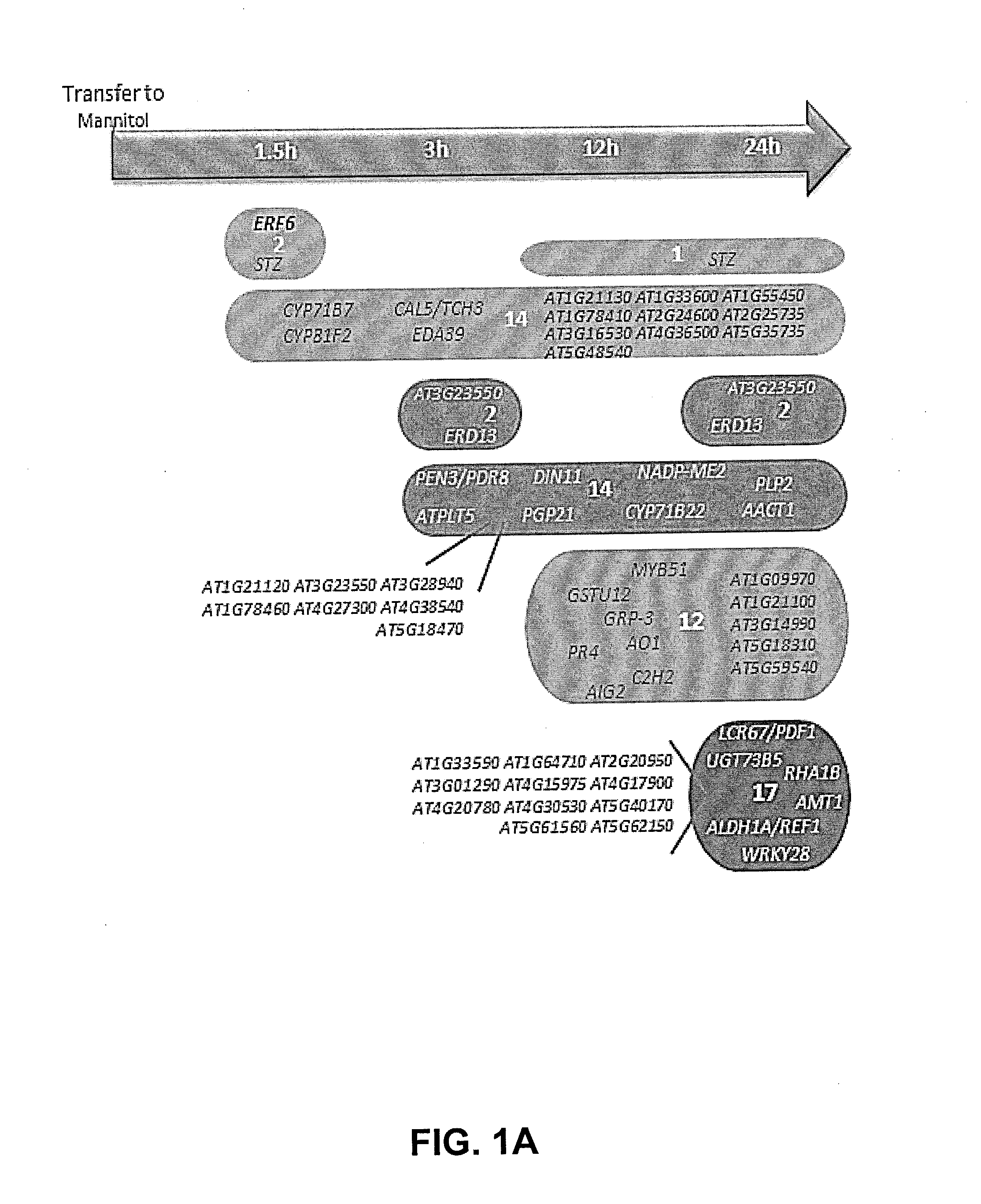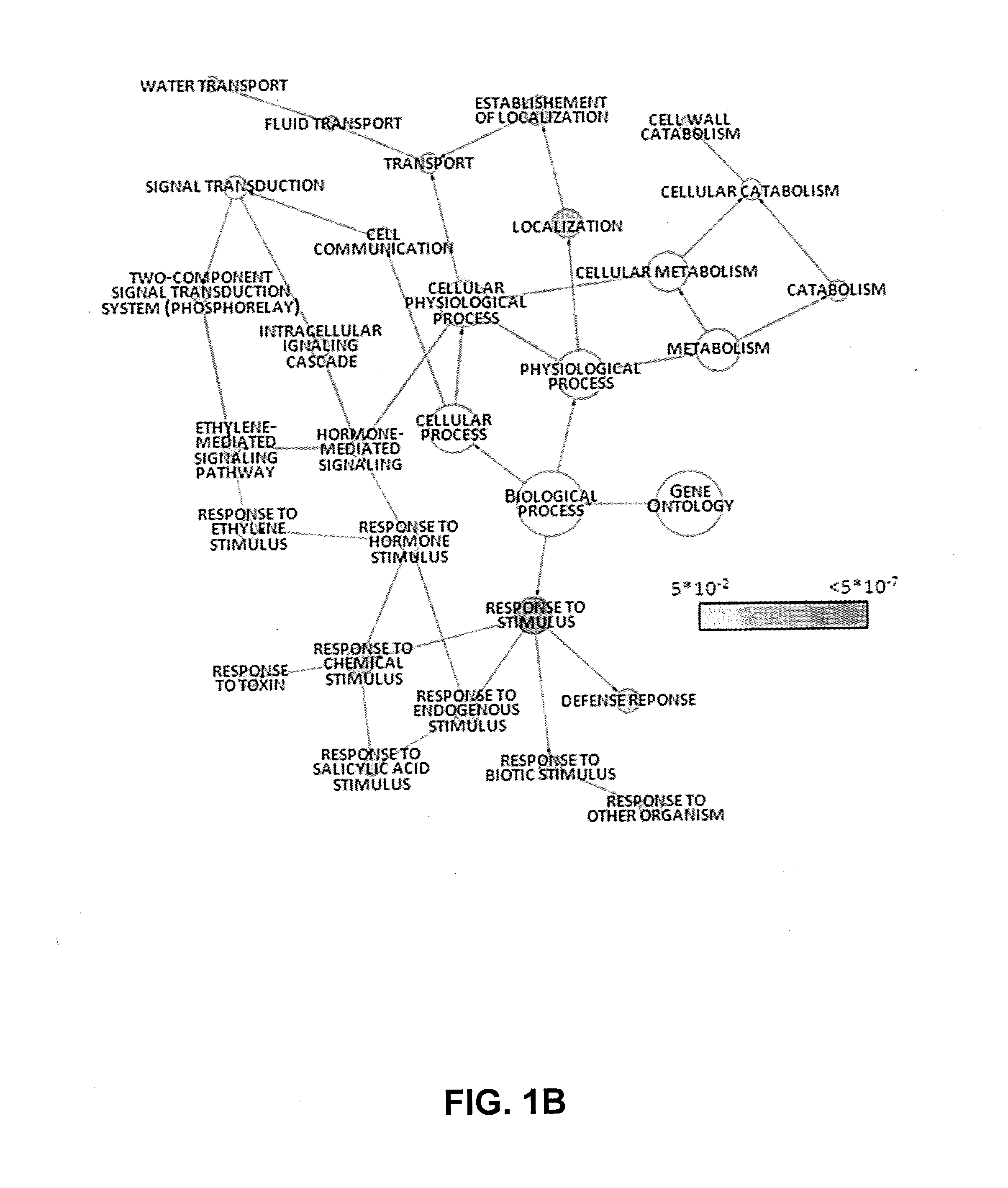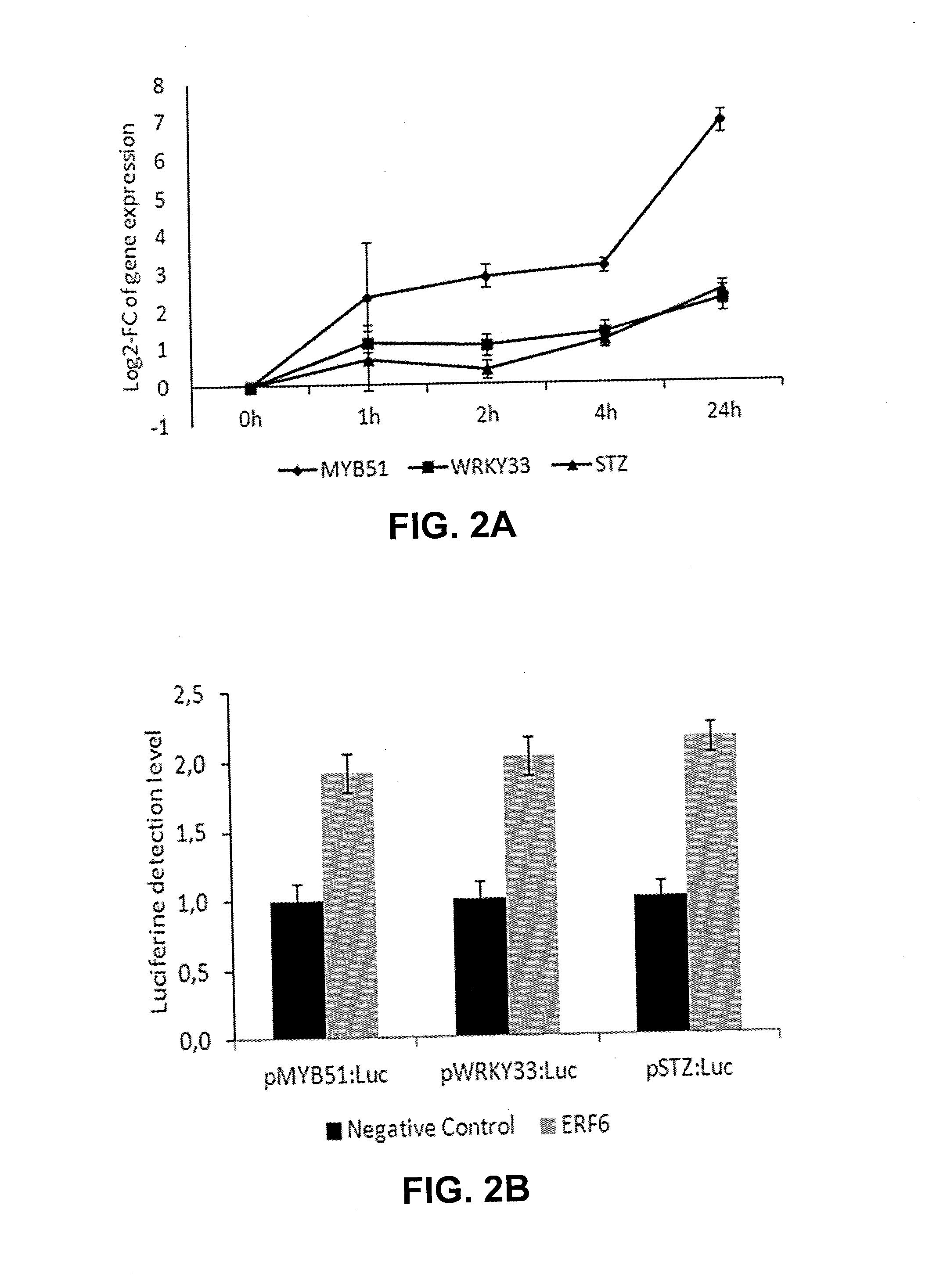Methods and means to produce abiotic stress tolerant plants
a technology of stress tolerance and methods, applied in the field of plant molecular biology, can solve the problems of only poorly understood environmental stress-induced growth inhibition, which is responsible for significant yield reduction, and achieve the effect of reducing or eliminating the risk of transgene flow through pollen and stable transformation of plastids
- Summary
- Abstract
- Description
- Claims
- Application Information
AI Technical Summary
Benefits of technology
Problems solved by technology
Method used
Image
Examples
examples
1. ERF6 is a Central Regulator of the Osmotic Stress Transcriptional Network
[0093]Exposure of Arabidopsis seedlings to low concentration of mannitol induced a massive transcriptional response in developing leaf initials, followed by a rapid growth arrest. The transcription factor ETHYLENE RESPONSE FACTOR 6 was identified as one of the genes that is rapidly up-regulated in proliferating leaf initials of plants exposed to osmotic stress. To investigate which part of the osmotic stress response found in the proliferating leaf primordia is regulated by ERF6, the ERF6 regulon was initially delineated using co-expression networks constructed based on the available micro-array data in CORNET (S. de Bodt et al. (2010), Plant Physiol. 2010 March; 152(3):1167-79. Using a Pearson Correlation cut-off of 0.7, 143 genes were found to be co-expressed with ERF6 in stress datasets. Comparison of the 143 genes obtained by the in silico analysis with the >1500 genes induced upon 1.5, 3, 12, and 24 hou...
PUM
| Property | Measurement | Unit |
|---|---|---|
| temperatures | aaaaa | aaaaa |
| time | aaaaa | aaaaa |
| time | aaaaa | aaaaa |
Abstract
Description
Claims
Application Information
 Login to View More
Login to View More - R&D
- Intellectual Property
- Life Sciences
- Materials
- Tech Scout
- Unparalleled Data Quality
- Higher Quality Content
- 60% Fewer Hallucinations
Browse by: Latest US Patents, China's latest patents, Technical Efficacy Thesaurus, Application Domain, Technology Topic, Popular Technical Reports.
© 2025 PatSnap. All rights reserved.Legal|Privacy policy|Modern Slavery Act Transparency Statement|Sitemap|About US| Contact US: help@patsnap.com



